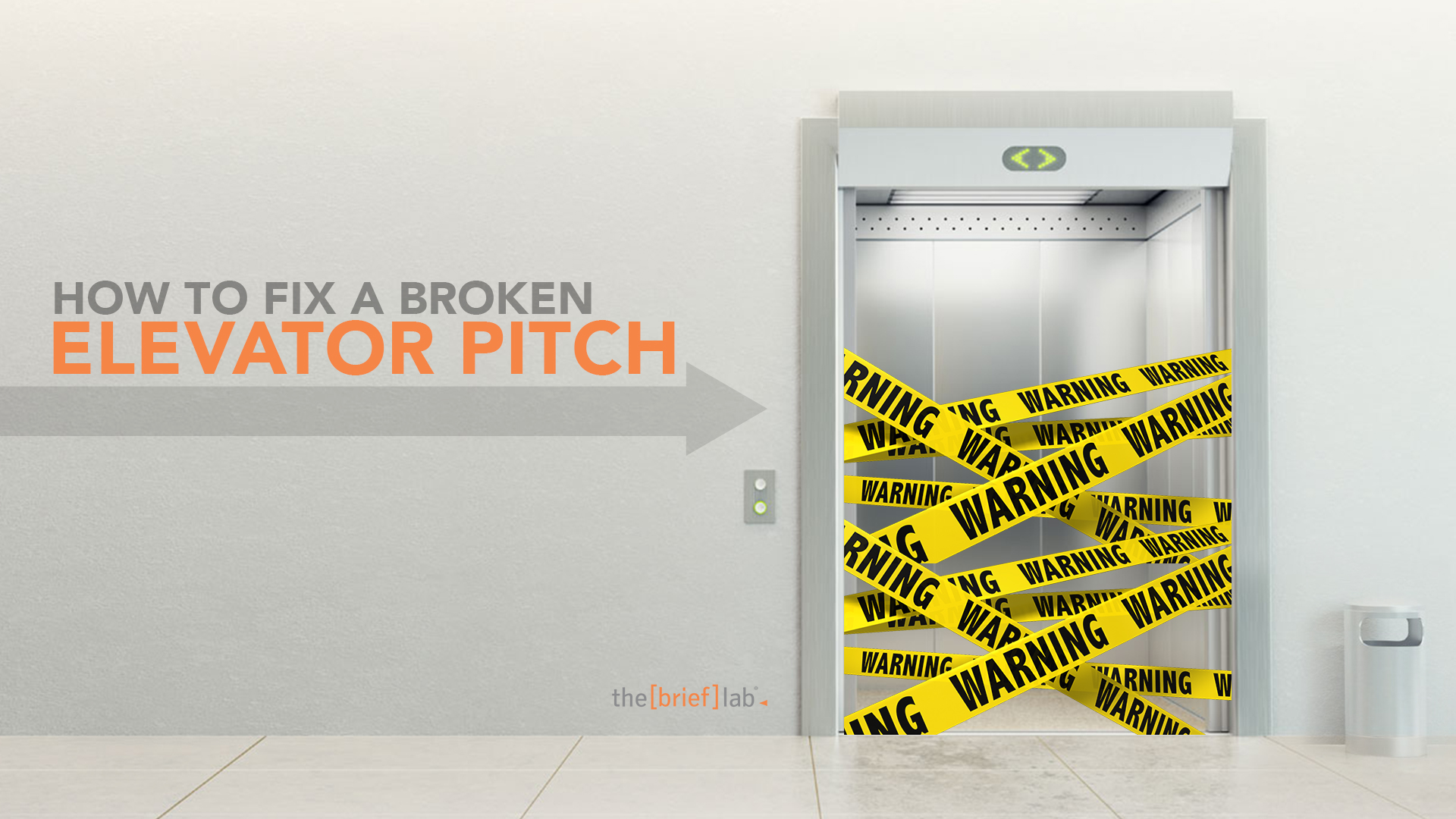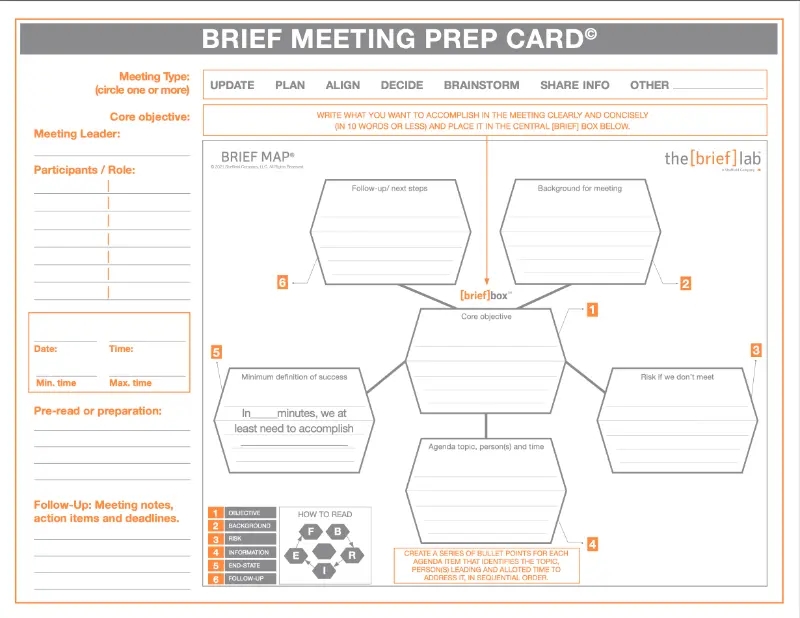
“So what do you do professionally?” Seems like a simple question, right? Then why do so many of us struggle with providing a clear and succinct answer? When every professional interaction could lead to the next big career move or key connection, we can’t afford to be long-winded, confusing or boring.
That answer is our “Elevator Pitch” and every business professional needs one. A compelling elevator pitch starts a conversation, creates new connections and strengthens our network. A broken elevator pitch rambles on, lacks clarity and forces listeners to tune out. We tend to do one of two things: give a short, boring answer or drag on with a long, pointless response.
What do you do again??
Here’s an example. I recently spoke at a conference and someone approached me to talk about my keynote. (Let’s call this person Mark.) Mark seemed friendly, experienced and personable so I thought it would be safe to ask him about his job in the banking industry. Big mistake. He started by throwing out every banking term in the book, then proceeded to tell me his life story. I couldn’t get a word in if I tried. I was checking my watch, my phone and getting annoyed. After it was finished, I still didn’t know what Mark did for a living. Now imagine if that happened to a prospect. Would he close the deal or leave it dangling?
And here’s the thing, a solid elevator pitch is critical for everyone. It’s not just for sellers like Mark. Business unit leaders, project managers, engineers, IT specialists, you name it…all of us need to clearly articulate our roles and our value. Especially in an age of shrinking attention spans, people can only stay focused for ten seconds or so. A solid summary grabs them from the start.
Why we deliver a weak elevator pitch?
Many business executives and senior military leaders have openly admitted to me that their elevator pitch is weak. Others think their pitch is solid, but it really isn’t. There are two reasons people have difficulty delivering a clear and concise pitch:
1. They give up too easily – they opt to talk in generic terms about their role, hoping to avoid questions and any possible confusion. The say too little and there’s nothing interesting (e.g., I’m a researcher, tax accountant, executive officer, sergeant major, trial lawyer, etc.)
2. They try too hard – they choose to describe specific details and dive quickly into their responsibilities. They say too much and overwhelm you with their pitch (e.g., I process credit applications and do customer service; I run the financial practice for a consulting firm; I manage the back-office quality function at a cloud-based software firm).
Both answers highlight who, what and how – but fail to explain the why and so what? They’re not compelling, so listeners tune out. For example, if someone asks Mark the banker what he does, here’s what he might say:
“I work at ACME Bank downtown. I’m responsible for financial asset management analysis and profiling. I’ve been there for three years…etc”
When you hear this, however, you’re likely to tune him out because there’s nothing to grab onto and talk about. It bounces around from too simple to too complicated; it’s a ride nobody wants to go on…trust me!
Start a conversation
Consider that an elevator pitch is not really about answering a question but starting a conversation. If you want to catch and hold someone’s attention, explain why you do what you do? Mark could start by sharing a broad problem he fixes and touch on the results he generates for clients. A more concise, creative approach is more satisfying and it positions him as a professional with purpose.
“I have a hard job that’s really rewarding. I help ACME Bank avoid bad loans by keeping risky customers out and making sure only good ones get in. We’re growing a lot and so am I!”
That elevator pitch is going somewhere. Why? Because it’s built intentionally not functionally; it talks more about why, not just what.
What makes a compelling elevator pitch?
• Grabs your attention – uses strong, powerful words that paint a clear picture and makes you listen for something more.
• Sets a hook quickly with a problem – explains a pressing problem or attractive payoff.
• Provides a brief example – provides a real-life instance where he fulfills his purpose professionally.
Here’s the good news. If you have a broken elevator pitch like Mark’s, you can fix it! Start by taking time to develop of few versions and practice. Yes, when I help senior leaders develop their pitch, I make them practice…a lot.
4 ways to fix the pitch
1. Map out a short version. On a blank piece of paper, draw a small circle in the center with the core message, surrounded by three or four small circles with supporting points.
2. Trim to less than 30 seconds. Start by using the map as a reference and say the long version out loud. After you do it a few times, take away your notes and time yourself. Practice until it’s less than 30 secs.
3. Replace jargon with everyday words. When you give the pitch, make sure to use words that are powerful, yet straightforward and easy to understand. Using fancy industry jargon only encourages people to tune out.
4. Practice on three people you know. It’s best to hone your pitch with a few people that can give you safe, constructive criticism. We do this exercise with teams at The Brief Lab and it works every time!
You’ll know it’s fixed when listeners ask you questions. Questions lead to conversation and that’s the outcome you’re looking for.
It’s not rocket science
Of course, unless you’re a rocket scientist! Use these practical steps to deliver a solid elevator pitch that answers that simple yet career defining question “so what do you do professionally?”
About the author: Joe McCormack is on a mission to help progressive organizations master concise communication. Joe works with fortune 500 companies and elite special operations units, is the founder of The Brief Lab and author of Brief: Make a Bigger Impact by Saying Less. Follow us on Twitter @TheBriefLab
Looking for a few simple, practical tools to help get started on the path toward brevity? Check this out. It’s our BRIEF Essentials toolkit. You can sign up and download with the form below. Or send us a message [email protected] to learn how progressive Fortune 500 companies and elite military units are embracing lean communication at The Brief Lab.

